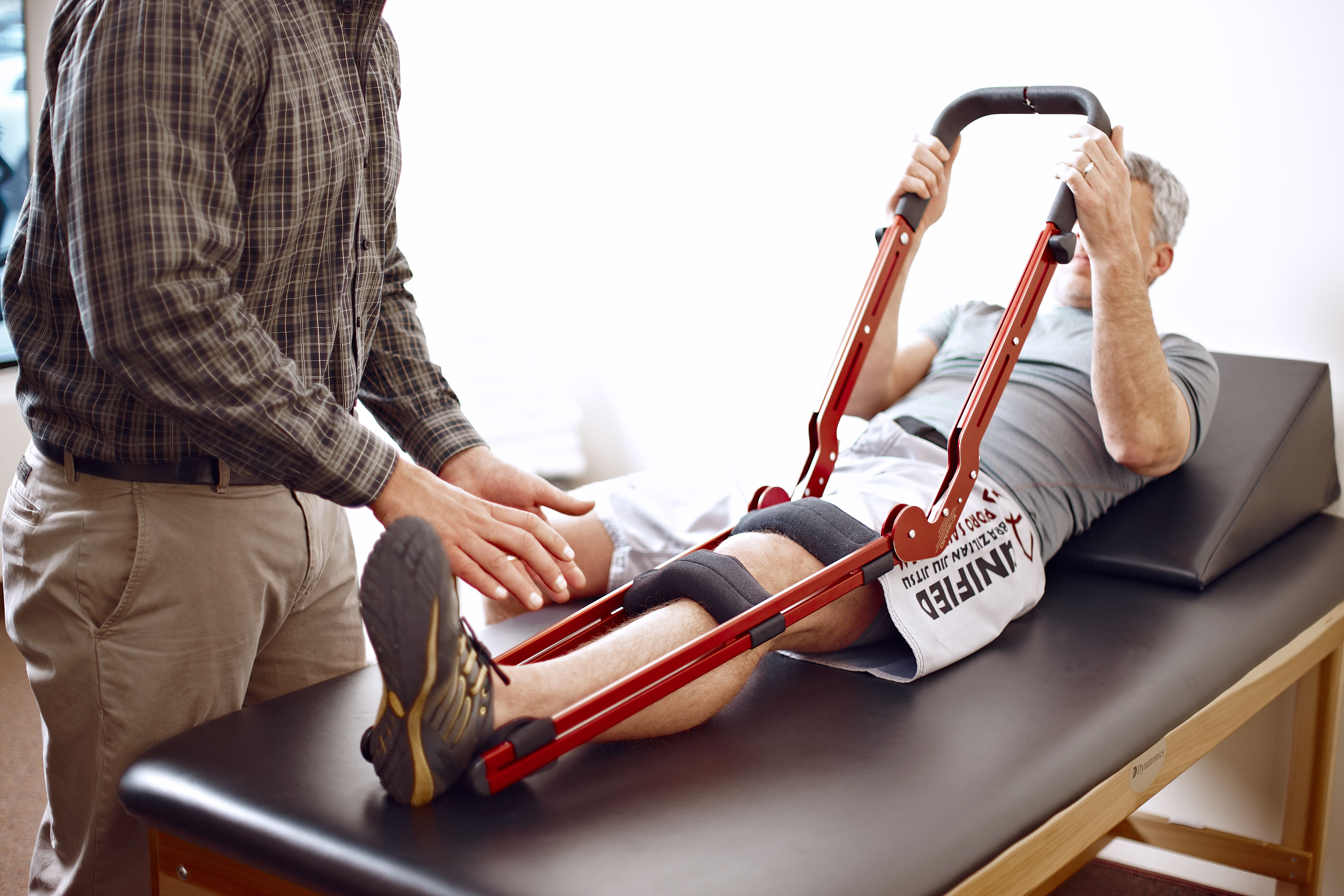Nearly 15 percent of patients who undergo total knee arthroplasty (TKA, or total knee replacement) experience arthrofibrosis – a post-operative complication where excessive scar tissue formation leads to painful and/or restricted knee motion.1 It is impossible for these patients, and other patients with knee arthrofibrosis, to effectively stretch or passively rotate their own knee without assistance. That’s why they need a device that promotes range of motion and stretch in extension to reduce pain and gain function.
Amazingly Versatile
Patient Controlled Stretch
With KneeMD, patients can perform extension stretches while lying down, sitting up or even standing, to stretch the leg and joint in different ways.
Passive Rotation
KneeMD can be used to passively rotate the knee joint through its available range of motion, which is especially beneficial before and after stretching or after a long period of inactivity, such as sitting in an office chair.
Relaxed Prolonged Stretch
Using a strap attachment, patients can use KneeMD to facilitate a prolonged stretch in a relaxed position. Adjustable straps make it easy to increase or decrease force as needed and to change the type of stretch.
Other Stretches
KneeMD can also be used for stretching in a therapy pool, doing hamstring stretches or even performing extension stretches while walking.
Use As a Supplemental Device
In addition to being used to correct range of motion or extension deficits, KneeMD can be used as a supplemental or transitional device from continuous passive motion (CPM) devices.
KneeMD is now available in limited quantity.
Brilliantly Simple
Post-operative rehabilitation following total knee arthroplasty (TKA, or total knee replacement) and other major knee surgeries is critical for regaining range of motion and strength. KneeMD is an easy-to-use knee rehabilitation device that allows patients to effectively stretch and rotate their knees on their own, without the assistance of a physical therapist. KneeMD gives the patient complete control over their therapy exercises, so they can adjust the frequency, duration and intensity of rehabilitation to minimize pain and maximize functional gain.
Because it’s so effective and easy to use, KneeMD is helping patients take ownership of their own rehabilitation. Physical therapists who use KneeMD with their patients report improved patient compliance with therapy, leading to an overall decrease in manipulation and an increase in patient satisfaction and success.
Built to Fit
KneeMD comes with easily adjustable straps which can configured in different ways to:
- Facilitate different types of stretches to simulate the different ways a physical therapist would manipulate a knee during a rehabilitation session
- Accommodate different leg sizes
- Avoid areas of incision or injury
Built to Motivate
KneeMD comes with a Track Bar that measures extension from the patient’s thigh in order to set goals, track progress and objectively measure extension gains.
Built to Move
KneeMD is lightweight and portable, so it’s easy to take and use anywhere – at home, at work, on the road and even in the pool.
Built to Last
Constructed from high-grade aluminum and stainless steel, KneeMD is durable for all-day, everyday use in a clinical setting or as a rental. KneeMD also comes with replacement straps and sanitary strap covers, so it can be safely used on multiple patients.
1Sharkey PF, et al., Insall Award paper. Why are total knee arthroplasties failing today? Clin Orthop Relat Res, 2002(404): p. 7-13.












